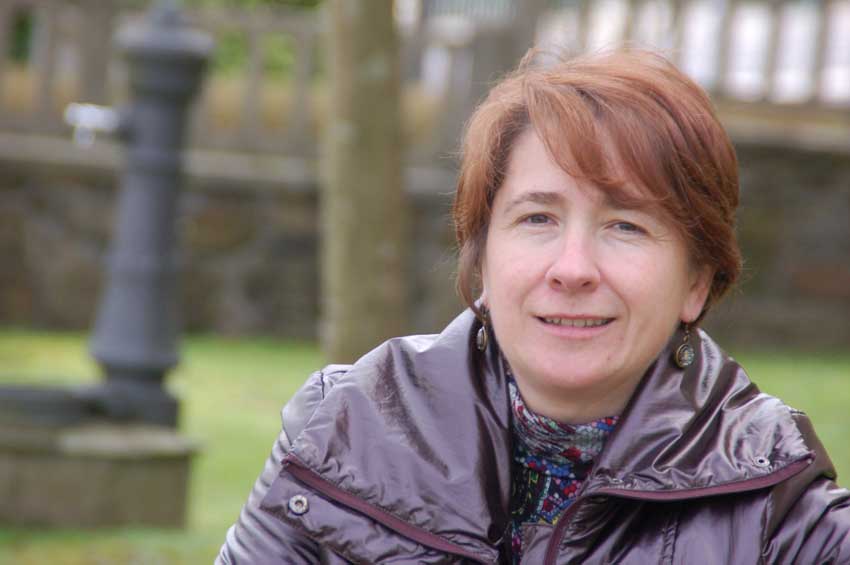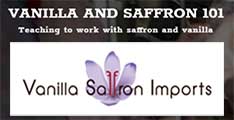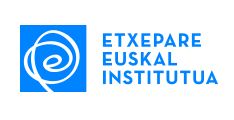Joseba Etxarri. I met Amagoia in the University of Nevada, Reno (UNR) in 1993, when she had just got there with her bachelor’s degree from the University of the Deusto with a scholarship from the Basque Government. During her year there, she lived and participated in the American Euskal Herria, dancing, for example, as you might find in Zamudio with the UNR’s Zenbat Gara Basque dance group, all while improving her English and cultivating this rich experience in Reno of experimenting with Basque and American through the Basque-American symbiosis. Many years have passed since then. She went back to the Basque Country, and besides her degree in History she also did a post-doc in Basque Studies and a Masters in Genealogy, but above all she continued working and participating in many initiatives related to practicing and researching popular culture. She has moved between teaching and serving as a librarian, to take up teaching again and continue in her path as a researcher and contributing to entities like Labayru or Etniker, not to mention her work with Antzinako, the Basque Association of Genealogy and Local History.
In introducing you, your capacity of working and getting involved, is also worthy of mention.
-I don’t know, maybe this is due to being from a small town like Zamudio where being just a few people you learn to do a bit of everything. Since I was small, I was involved and like everyone participated in many initiatives that came up in town. You are part of it, the dance group, you go to Kili-Kili, you participate in choir, and activities surrounding Euskera…the local dynamic is that…one thing leads to another…you end joining Labayru and Etniker….Then you begin to interview elders in the town and you see how that opens very interesting doors to the traditional world and you feel obligated to contribute in any way that you can to document and preserve it. You learn how the generations that preceded us lived, how they dressed, how they had fun, what they did and why….super interesting. I began doing the first interviews in 1986-87, and I have to say that they taught me a lot. It is something that must be carried out calmly. You learn to listen and this also adds them value in this world where everything is rushed and done against the clock.
You are from Zamudio, a town like many in Euskal Herria that has an extension of itself beyond the sea, in the Diaspora.
-Yes, we feel that this people, they are also Zamudio, many of out people went to America, both north and south. It is curious in a town as small as ours, but maybe that is why we want to know everything and also defend our American reality, that part of Zamudio that we contributed to America with. And we research what caused this immigration, who immigrated, from what farmhouses, under what circumstances, and we publish the results of our research so that other people become aware of the history so the ties are not lost, and the relationship continues. In many cases the descendants of those immigrants treasure what those who left here tell them about Zamudio and the Basque Country. When they come and visit us they learn that we haven’t’ forgotten them and that we feel that they are part of us.
You also have family in America, in the US.
-Two of my grandmother’s brothers immigrated to America and one of them had children and descendants that we are still in touch with. They keep coming to Zamudio, but the year I was in Reno I was able to see the landscapes of my great uncle with my own eyes. I visited his ranch in Blackfoot, ID and the mountains where he worked as a herder. The surrounding ranches were also Basque ranches. At that time, that was the Basque reality, a reality that I had always heard about at home, although seeing it, getting to know it and feel it was very special. I didn’t know, at that time, how many from Zamudio went to places like California, Idaho, Nevada and Utah, people from a lot of the farmhouses from here, families like Aldana, Orbea, Gamboa, Ayarza, Zarate, Bilbao, Mugarra….Many worked as herders and on ranches. Felix Bilbao and Begoña Laita, for example, opened the Bilbao Basque Corner a bar/restaurant in San Francisco.
You are the president of Antzinako, the Basque Genealogy and Local History Association.
-I always knew genealogy surrounding me, from home, but it was a genealogy without papers (smile). At home, when someone would pass away, Amuma (grandma) used to say “so and so passed away, he or she is a relative, was a cousin on Aitxitxe’s side (grandpa) because he married with so and so, from the farmhouse whatever.” Before all of this information was kept in people’s memories, and generations before us, knew how to put it all together and they were able to create, in their way, a family tree. In my opinion, genealogy acquires its true value when, far from being a mere list of date, the tree is dressed and colored with fruit, that is, when at the same time we know that the ancestor X moved from a house or town, we know why he or she did it, what his/her life was like and under what circumstances. The research certainly takes time and dedication, but it is a captivating task. That is what we do at Antzinako that is an association that gathers fans of genealogy. We help each other a lot, including those who begin to form their family tree. I requires personal work, but the support, experience, group work and advice always help. Now we are preparing our next meeting. It will take place on October 8 in Baiona, and will gather genealogists from Iparralde and Hegoalde. Anyone wishing to do a family tree, or who are doing one, or people interested in local history will find booths and people, research, material and interesting fellow members.






 Send to a friend
Send to a friend Add comment
Add comment








